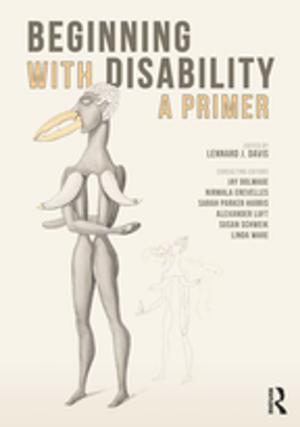Conditioning
Situation Versus Intermittent Stimulus
Nonfiction, Science & Nature, Science, Biological Sciences, Health & Well Being, Psychology| Author: | Wanda Wyrwicka | ISBN: | 9781351289344 |
| Publisher: | Taylor and Francis | Publication: | November 30, 2017 |
| Imprint: | Routledge | Language: | English |
| Author: | Wanda Wyrwicka |
| ISBN: | 9781351289344 |
| Publisher: | Taylor and Francis |
| Publication: | November 30, 2017 |
| Imprint: | Routledge |
| Language: | English |
In laboratory research, the process of conditioning is traditionally initiated with a single intermittent stimulus (such as a tone or flash of light). This is true of both classical and instrumental research. Because of its role in evoking conditioned behavior, the use of an intermittent stimulus has become an indispensable part of laboratory research on conditioned behavior. The question arises whether the same scheme of conditioning may be applied to behaviors occurring in real life.
In Conditioning, Wanda Wyrwicka analyzes evidence of the influence of situations on behavior in laboratory studies. She looks at cases in which the subject's reaction was dependent on complex situations rather than a single stimulus. Wyrwicka suggests that beyond external situations there exists internal factors located in the brain that consist of previous and present experiences that may influence behavior. In Chapter 1, Wyrwicka summarizes Ivan Pavlov's concept of the conditioned reflex using intermittent stimuli. Chapter 2 deals with the mechanisms of motor conditioned behavior and the results of instrumental conditioning studies. Chapter 3 covers the phenomenon called "switching," which is the appearance of a conditioned reaction different than the original conditioned stimulus. In Chapter 4, Wyrwicka describes various studies in which situation becomes a potent factor in conditioned reactions. Chapter 5 describes research pertaining to defensive and alimentary behaviors. Chapter 6 analyzes three examples of complex conditioning: detour, feeding, and presleep behaviors. Chapters 7 and 8 focus on the functions of various internal organs, and the conditioning of electrical brain activity leading to inhibition of epileptic seizures. In her concluding chapter, Wyrwicka discusses theoretically the data mentioned previously.
Conditioning opens up rich possibilities for continued exploration. This revealing work will interest scientists specializing in behavioral sciences, psychologists, neuroscientists, educators, as well as students of biology.
In laboratory research, the process of conditioning is traditionally initiated with a single intermittent stimulus (such as a tone or flash of light). This is true of both classical and instrumental research. Because of its role in evoking conditioned behavior, the use of an intermittent stimulus has become an indispensable part of laboratory research on conditioned behavior. The question arises whether the same scheme of conditioning may be applied to behaviors occurring in real life.
In Conditioning, Wanda Wyrwicka analyzes evidence of the influence of situations on behavior in laboratory studies. She looks at cases in which the subject's reaction was dependent on complex situations rather than a single stimulus. Wyrwicka suggests that beyond external situations there exists internal factors located in the brain that consist of previous and present experiences that may influence behavior. In Chapter 1, Wyrwicka summarizes Ivan Pavlov's concept of the conditioned reflex using intermittent stimuli. Chapter 2 deals with the mechanisms of motor conditioned behavior and the results of instrumental conditioning studies. Chapter 3 covers the phenomenon called "switching," which is the appearance of a conditioned reaction different than the original conditioned stimulus. In Chapter 4, Wyrwicka describes various studies in which situation becomes a potent factor in conditioned reactions. Chapter 5 describes research pertaining to defensive and alimentary behaviors. Chapter 6 analyzes three examples of complex conditioning: detour, feeding, and presleep behaviors. Chapters 7 and 8 focus on the functions of various internal organs, and the conditioning of electrical brain activity leading to inhibition of epileptic seizures. In her concluding chapter, Wyrwicka discusses theoretically the data mentioned previously.
Conditioning opens up rich possibilities for continued exploration. This revealing work will interest scientists specializing in behavioral sciences, psychologists, neuroscientists, educators, as well as students of biology.















